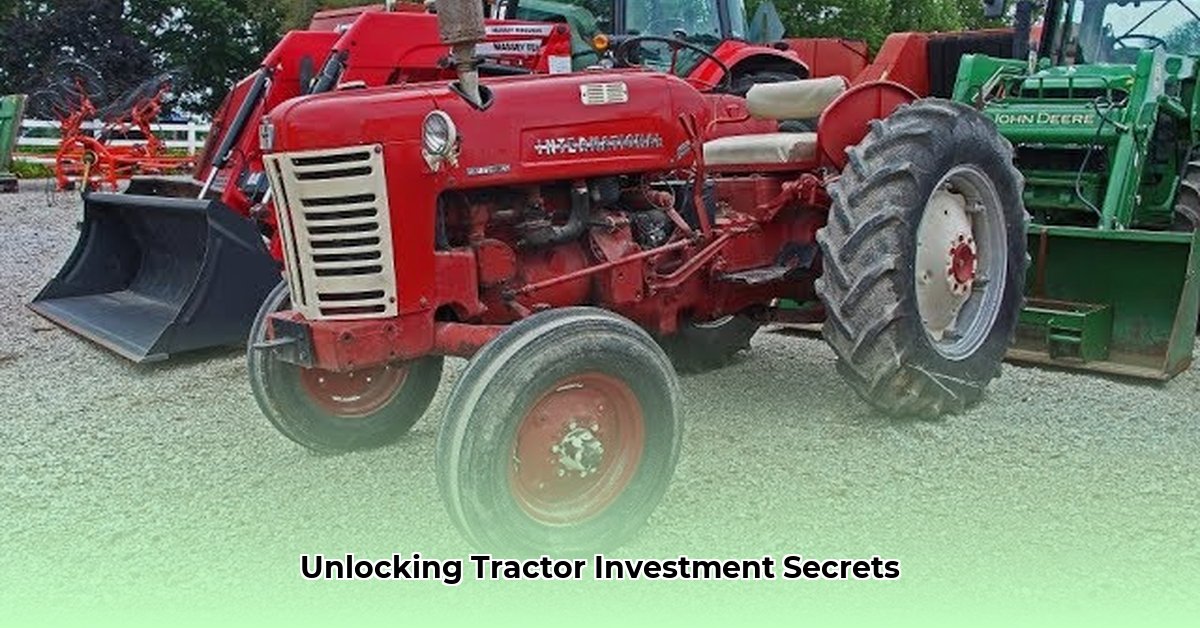
A Legacy Forged in Steel: The International Harvester 300
The International Harvester 300: a name that evokes images of sun-drenched fields and the rhythmic chug of a powerful engine. Produced from 1955 to 1958, nearly 60,000 of these iconic tractors rolled off the assembly line, becoming symbols of post-war agricultural prosperity. More than just farm implements, these machines represent a bygone era of American ingenuity and craftsmanship, now captivating collectors worldwide. But what's the real story behind this agricultural icon, and is investing in one a worthwhile endeavor? For current market values, check out this helpful resource: tractor values.
Under the Hood: Technical Specifications of the IH 300
The IH 300, while seemingly simple compared to modern tractors, possessed a robust design that ensured its enduring legacy. Typically powered by a 4-cylinder gasoline engine (some models offered liquid propane gas!), it delivered approximately 42 horsepower – substantial for its time. The 4-speed manual transmission, though basic, proved incredibly durable. Its approximate weight of 4,500 pounds provided excellent stability during operation. While these specs may seem modest by today's standards, remember these tractors were built to withstand years of arduous farm work, with many still operational today.
| Specification | Details |
|---|---|
| Engine | 4-cylinder gasoline (LPG options available) |
| Horsepower | ~42 hp |
| Transmission | 4-speed manual |
| Weight | ~4,500 lbs |
| Production Years | 1955-1958 |
| Approximate Production | ~60,000 |
Market Analysis: Decoding the IH 300's Value
The price of a used IH 300 varies significantly, ranging from a few thousand dollars to well over $6,000. Several factors influence this fluctuation. Condition is paramount: a meticulously restored tractor will fetch a premium compared to a neglected project. Location also plays a significant role; a rare find in a region with high collector demand will command a higher price. Even when adjusted for inflation, the initial cost of these tractors points to a robust build and lasting value. But how do these factors interact? This requires a nuanced understanding of the market.
Isn't it remarkable how the price of a used IH 300 can vary so wildly? What factors are the most prominent in determining value?
The condition of the tractor, and the availability of parts, are highly important. It's more than just mechanics; the IH 300's historical significance adds to its value. A well-preserved example with original components will be deemed more valuable than a heavily restored or modified unit.
Collector's Guide: Buying, Selling, and Restoring Your IH 300
Acquiring a vintage tractor is an exciting venture, but careful planning is essential. This step-by-step guide provides a framework for success:
1. Thorough Research: Investigate different IH 300 models and variations. Online forums and collector communities are invaluable resources.
2. Pre-Purchase Inspection: A comprehensive inspection is crucial. Look for rust, wear, and mechanical issues. Consider enlisting a qualified mechanic for a more thorough examination. Pay close attention to the engine, including oil leaks, and the steering system for any play or issues.
3. Negotiation and Pricing: Armed with your research and inspection findings, you can negotiate a fair price. Comparable sales data will help establish a realistic market value.
4. Restoration Considerations: If purchasing a project tractor, factor in parts sourcing and restoration costs. Online communities and specialized suppliers can be helpful resources.
5. Ongoing Maintenance: Preventative maintenance is crucial for preserving your IH 300's value and ensuring its longevity.
Conclusion: Investing in a Piece of History
The market for vintage tractors like the IH 300 remains dynamic. The dwindling number of functioning units suggests that well-maintained examples will likely appreciate in value over time. Their historical significance and nostalgic appeal continue to resonate with collectors and enthusiasts. However, careful research and shrewd decision-making are vital for long-term success in this market. The key is to balance passion with financial prudence. Are you ready to become the next custodian of this agricultural masterpiece?